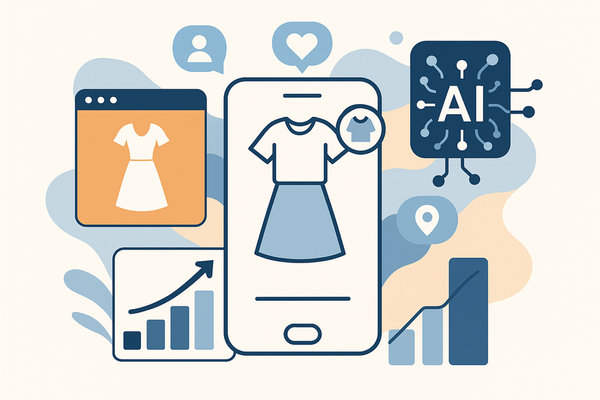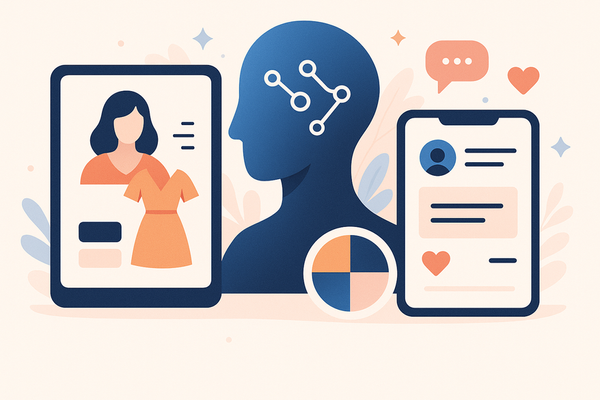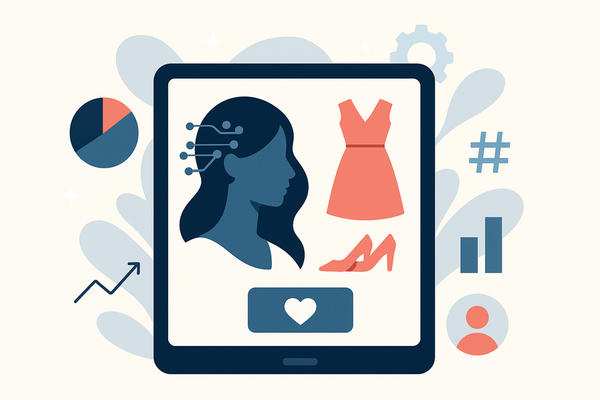Next Season Style Forecast with AI: Revolutionizing Fashion Trend Prediction
Discover how AI is revolutionizing fashion trend prediction with next season style forecasts, making design more accurate and efficient.

Estimated reading time: 8 minutes
Key Takeaways
- AI transforms traditional forecasting by analyzing real-time social media, e-commerce, and street‐style images.
- Machine learning and computer vision spot pattern shifts and predict upcoming colors, cuts, and materials.
- Benefits include greater accuracy, objectivity, efficiency, and adaptability, reducing waste and markdowns.
- Challenges center on data quality, creativity limits, and ethical/privacy considerations.
- The future holds generative AI designs, hyper-local forecasts, and real-time sentiment analysis.
Table of Contents
- Introduction
- What Is a “Next Season Style Forecast with AI”?
- Evolution of Forecasting
- How AI Works in Fashion Forecasting
- Data Analysis
- Machine Learning
- Image & Trend Recognition
- Forecasting Process
- Example Applications
- Benefits of Using AI for Next Season’s Style Forecasts
- Case Studies and Real-World Examples
- Challenges and Considerations
- Future of AI in Fashion Forecasting
- Conclusion
- FAQ
Introduction
A next season style forecast with AI is the use of advanced algorithms to analyze massive datasets and predict upcoming fashion trends. In simple terms, machines learn from images, texts, and sales figures to forecast which colors, cuts, and fabrics will dominate the next runway. While traditional forecasting relied on expert intuition and sales data, AI processes real-time social media chatter, e-commerce patterns, and street‐style photos to spot trend signals faster than ever.
Get a firsthand look at AI-powered trend and beauty analysis with Maxx Report, where you can generate personalized reports and style previews. It’s a quick way to apply AI forecasting directly to your wardrobe and glow-up journey.
What Is a “Next Season Style Forecast with AI”?
A next season style forecast with AI predicts the colors, cuts, materials, and looks set to rule the upcoming cycle. It combines expert know-how and data science to anticipate demand, reduce waste, and inspire designers.
Key definitions:
- Next season style forecast: Predicting dominant silhouettes, hues, and textures before they hit stores.
- AI in fashion forecasting: Using machine learning, neural networks, and pattern detection to scan social media posts, e-commerce sales, search trends, and street-style photos.
Evolution of Forecasting
- Traditional methods:
- Expert intuition
- Runway show observations
- Historical sales and cultural analysis
- AI-powered tools like those detailed in our AI Style Trend Predictions guide:
- Real-time data crunching
- Granular insights
- Objective, bias-reduced signals
Why it matters:
- Designers craft capsule collections that resonate.
- Brands optimize inventory, cutting costs and waste.
- Trendsetters stay ahead of style shifts.
How AI Works in Fashion Forecasting
Data Analysis
AI systems review millions of data points to identify trend signals, including social media posts (Instagram, TikTok), runway and street-style images, e-commerce purchase histories, and search engine queries. By scanning hashtags, captions, and purchase timing, AI spots pattern shifts—like an uptick in pastel sneaker searches.
Machine Learning
Models train on historical data to project future trends. They learn patterns—if neon green surged in spring 2022, algorithms measure seasonality, cultural events, and influencer impact. Continuous refinement boosts accuracy over time.
Image & Trend Recognition
Computer vision ingests images from social feeds and runway galleries, detects garments and accessories, tags items by material and pattern, then tracks tag popularity over days, weeks, or months.
Forecasting Process
- Data collection:
- Social media platforms
- Fashion show photo dumps
- Retail sales APIs
- Data synthesis:
- Combine images with text analysis (hashtags, reviews)
- Gauge consumer sentiment (likes, comments, shares)
- Predictive ranking:
- Rank styles, silhouettes, and colors by projected popularity
- Generate dashboard reports for designers and merchandisers
Example Applications
- Heuritech: Converts millions of social images into quantifiable trend norms for brands like Louis Vuitton.
- Tagwalk: Offers AI-powered runway search, enabling designers to filter past collections by shape or fabric.
For a broader view on fashion trend analysis AI, explore how it transforms forecasting.
Benefits of Using AI for Next Season’s Style Forecasts
- Accuracy & Efficiency: Processes exponentially more data than human teams, detecting trends days or weeks earlier.
- Objectivity: Reduces personal bias by relying on real consumer behavior patterns.
- Adaptability: Provides real-time updates, letting brands pivot collections when unexpected trends emerge.
These advantages lead to lower markdowns, optimized inventory, and more on-trend designs.
Case Studies and Real-World Examples
Heuritech
Uses image recognition to analyze global social media and helps luxury brands adapt runway cues to street-level demand.
WGSN & Trendalytics
Combine AI with human expertise to deliver region-specific trend reports for brands like Adidas, optimizing product lines and inventory.
Predicted Trends in Action
- Athleisure surge detected through fitness influencer posts.
- Sandstone beige palette spotted months before it dominated runways.
- Y2K revival flagged early by micro-influencer street-style posts.
Challenges and Considerations
Data Quality: Biased or incomplete datasets can skew predictions and mislead brands.
Creativity Limitations: AI excels at pattern detection but can’t replicate human intuition for cultural nuance.
Ethical & Privacy Concerns: Collecting user-generated content raises questions about consent and data ownership.
Best Practice: Blend AI insights with human expertise and maintain transparent data policies to build trust.
Future of AI in Fashion Forecasting
Emerging Technologies:
- Generative AI: Drafts capsule collection designs based on forecasted trends.
- Advanced image recognition: Targets hyper-local street style for region-specific insights.
- Real-time sentiment analysis: Refines predictions by gauging consumer emotions instantly.
Industry Impact:
Supply chains become more sustainable, design-to-shelf cycles accelerate, and personalized forecasts enable hyper-targeted marketing. Soon, AI may react to viral moments within hours, blurring the line between prediction and creation.
Conclusion
A next season style forecast with AI reshapes how the fashion industry designs, markets, and stocks products. By analyzing vast data streams—social media, runway imagery, sales history—AI delivers accuracy, objectivity, and agility beyond human capacity. The result: on-trend collections, optimized inventories, and faster, more sustainable fashion cycles.
As AI technologies like machine learning, computer vision, and generative models evolve, forecasting will become an automated, hyper-personalized process. Designers and brands who embrace these tools will stay ahead of the curve.
FAQ
- What data sources power AI fashion forecasting?
AI analyzes social media posts, e-commerce sales, search queries, and street-style images to detect emerging trends. - How accurate are AI-driven predictions?
Accuracy improves over time as models learn from historical patterns; many brands report spotting trends weeks earlier than traditional methods. - Can AI replace human forecasters?
AI excels at pattern detection, but human intuition remains vital for cultural nuance and creative direction. - Are there privacy concerns?
Yes—brands must secure consent, respect platform policies, and use anonymized data to protect user privacy. - How can small brands access AI forecasting?
Platforms like Heuritech, Tagwalk, and Maxx Report offer tiered services, making AI insights accessible regardless of budget.





